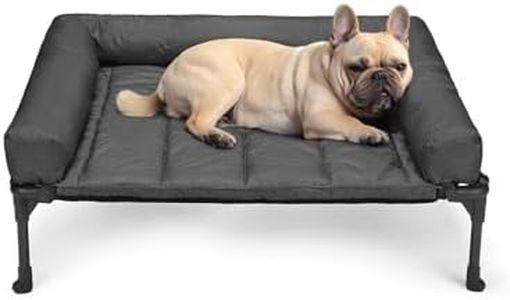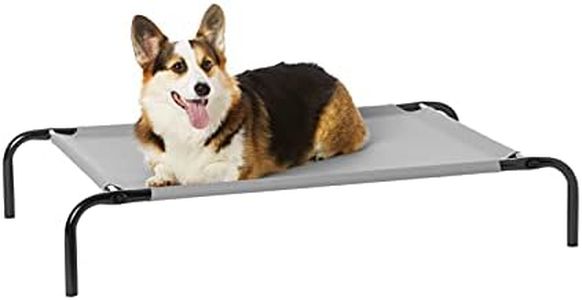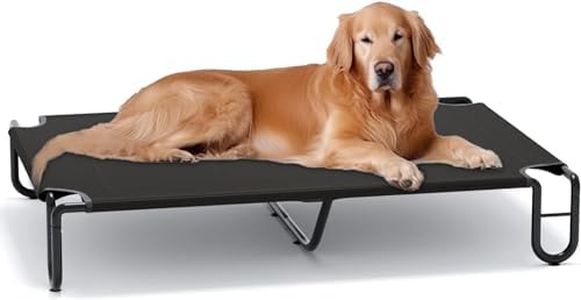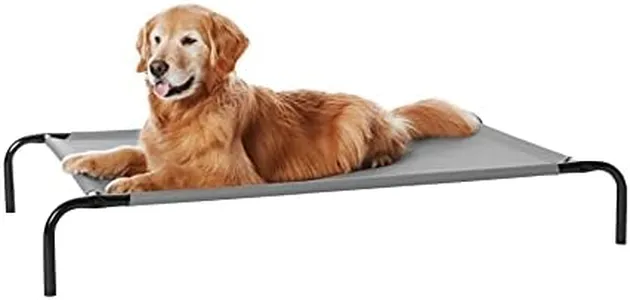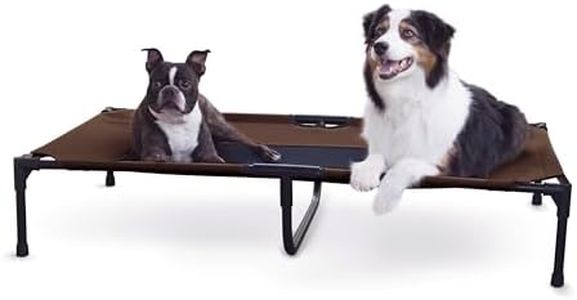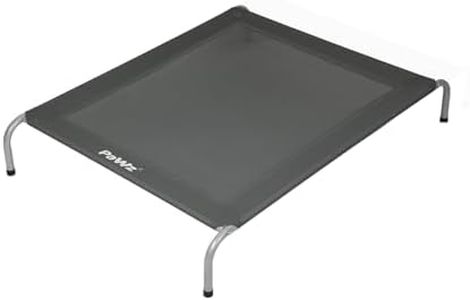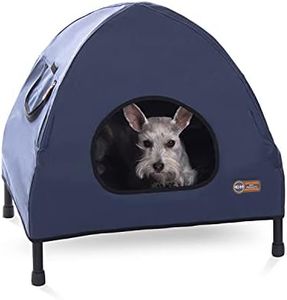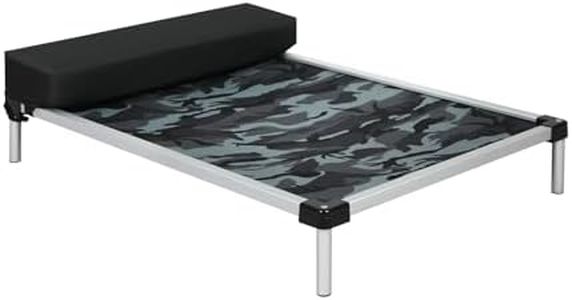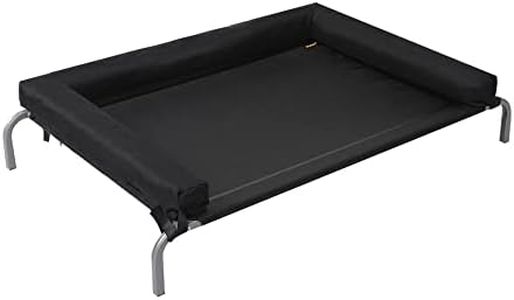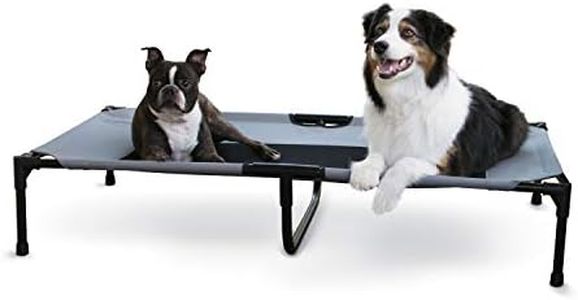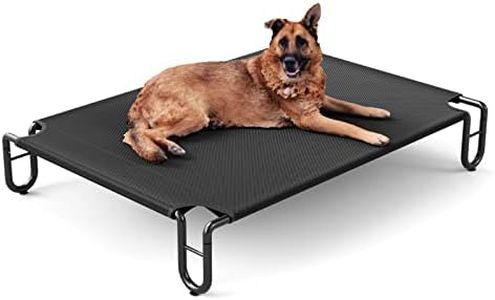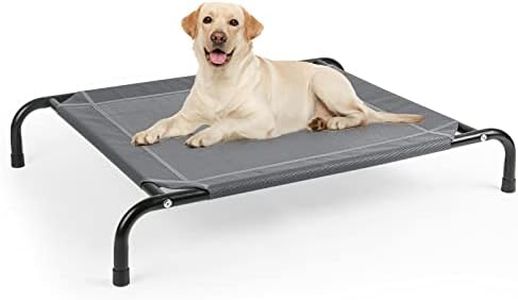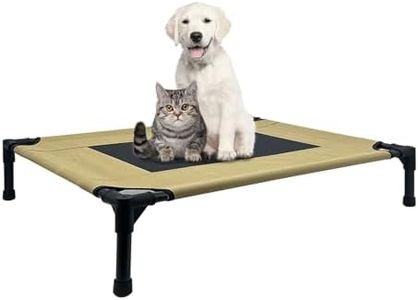We Use CookiesWe use cookies to enhance the security, performance,
functionality and for analytical and promotional activities. By continuing to browse this site you
are agreeing to our privacy policy
10 Best Raised Dog Beds
From leading brands and best sellers available on the web.Buying Guide for the Best Raised Dog Beds
Choosing the best raised dog bed for your pet ensures comfort, cleanliness, and durability. Raised dog beds offer several advantages: they keep your dog off the cold or hot floor, allow for better airflow, and can be easier to clean. To select the perfect bed, you'll want to match its features with your dog's size, habits, and where you plan to use it. Consider how your dog sleeps, the climate in your area, and whether the bed will mostly be used indoors or outdoors.Size and Weight CapacitySize refers to the dimensions of the bed while weight capacity is how much weight the raised bed can support. This is important because you want your dog to fit comfortably and the bed to remain sturdy. Beds come in sizes ranging from small for toy breeds up to extra-large for big dogs. When selecting, measure your dog in their sleeping position and allow for extra space, especially if they like to sprawl out. Also, always check that the bed can handle your dog's weight—if your dog is near the upper limit, moving or stretching may put stress on the frame.
Frame MaterialThe frame is the structure that supports the bed and elevates your dog off the ground. Common materials include metal, plastic, and wood. Metal frames are generally the most durable and suitable for larger or very active dogs, while plastic frames are lighter and often appropriate for smaller pets or indoor use. If you plan to use the bed outside or if your dog chews, opt for stronger materials like powder-coated steel. For smaller, gentle dogs or those who will be indoors, lighter frames may be just right.
Sleeping Surface MaterialThe material on which your dog lies can be mesh fabric, canvas, or other synthetics. This affects comfort, breathability, and how easy it is to clean. Mesh is good for breathability, especially in hot climates, as it allows air to circulate under your dog. Canvas is more durable and is often more water-resistant. Choose mesh for warmer climates or if your dog overheats easily, and tougher materials like canvas for dogs who scratch or for outdoor use.
Height Off the GroundThis is how high the sleeping surface is from the floor. A higher bed provides more airflow and keeps your dog farther from cold, heat, and pests, while a lower bed is easier for smaller or older dogs to get on and off. Heights usually range from a few inches up to a foot. For puppies, seniors, or dogs with mobility issues, a lower bed is safer. For most adults or if you want maximum separation from the ground, a taller bed may be best.
Ease of Assembly and PortabilitySome raised dog beds are quick to put together and light enough to move, while others are more permanent. Ease of assembly matters if you plan to take the bed when traveling, camping, or moving it between rooms or outside. If you need a portable solution, look for beds that are lightweight and either fold or come apart easily without tools. For a stationary bed, this may be less of a concern.
Ease of CleaningRaised dog beds are generally easier to clean than traditional beds, but the fabric type and how it attaches matter. Removable, washable fabric is ideal for regular cleaning, especially if your dog is prone to accidents or often gets dirty. If easy cleaning is a priority, check if the fabric can be wiped down, hosed off, or machine washed. This is particularly important for dogs with allergies or skin conditions.
